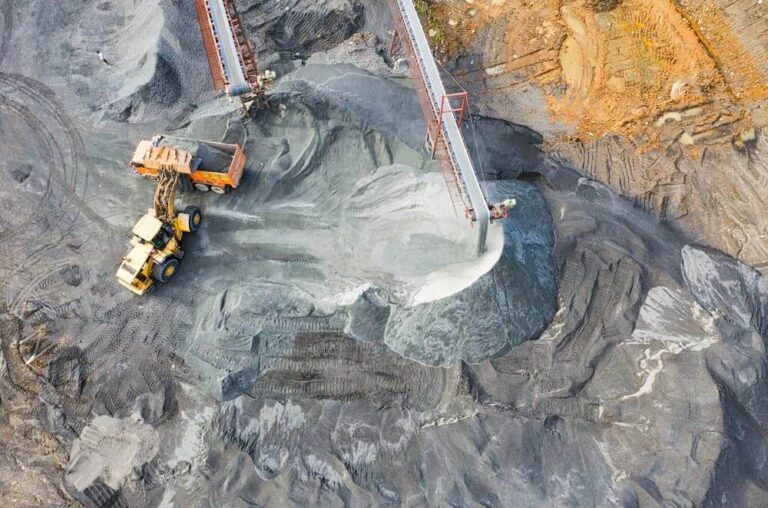Mining is a critical industry that provides the raw materials needed for a wide range of sectors, from construction to technology. However, as with all industries, it carries a significant environmental impact, especially when it comes to the methods used to extract resources. Open-cut and underground mining are the two most common methods of extraction, each with its own set of advantages and challenges. Comparing open-cut and underground mining is essential to understanding the environmental effects of these mining techniques, which is crucial for balancing the need for natural resources with the responsibility to protect the environment.
Open-Cut Mining: What Are the Environmental Concerns?
Open-cut mining, also known as strip mining or surface mining, involves removing large sections of soil and rock to expose the minerals beneath. This technique is often used when minerals are located close to the surface, allowing for easier and more cost-effective extraction. However, this method can have significant environmental consequences.
The most obvious environmental concern with open-cut mining is habitat destruction. The process of removing large amounts of earth can lead to the displacement of plant and animal species, disrupting ecosystems. In addition, the removal of vegetation can contribute to soil erosion, which in turn affects local water systems. Water runoff from open-cut mining operations may also carry contaminants, including heavy metals, that can poison surrounding water bodies.
Underground Mining: A Different Set of Challenges
In contrast to open-cut mining, underground mining involves creating tunnels or shafts beneath the earth’s surface to access mineral deposits. While underground mining typically has a smaller environmental footprint in terms of land disturbance, it does come with its own set of challenges.
One of the key environmental issues with underground mining is the risk of groundwater contamination. As mining operations progress, there is the potential for pollutants, including hazardous chemicals and heavy metals, to seep into underground water sources. This is particularly concerning in areas where water is scarce and dependent on underground aquifers.
Comparing Open-Cut and Underground Mining: Environmental Impact
When assessing the environmental effects of both open-cut and underground mining, it is important to consider the specific context of each project. Factors such as the type of mineral being mined, the location of the deposit, and the surrounding ecosystem play a role in determining which method is more environmentally friendly.
Open-cut mining is often preferred when minerals are located close to the surface, as it allows for faster and more cost-effective extraction. However, its large-scale land disturbance and environmental risks, such as habitat destruction and water contamination, make it a more controversial choice. On the other hand, underground mining can minimize land disturbance and is often used for deeper deposits. However, its potential for groundwater contamination and subsidence poses significant environmental risks.
Sustainability Measures in Mining
While both open-cut and underground mining have inherent environmental risks, there are various sustainability measures that can be implemented to minimize their impact. For open-cut mining, the use of technologies that reduce dust and water contamination can help improve environmental outcomes. Implementing strict reclamation processes, where the land is restored to its natural state after mining, can also mitigate long-term habitat destruction.
For underground mining, ensuring proper waste disposal and water management systems are in place is essential to prevent contamination. Advances in technology, such as more efficient mining equipment and improved tunnel engineering techniques, can also reduce the environmental footprint of underground operations.
Community and Ecosystem Considerations
In addition to environmental concerns, mining operations must also consider the impact on local communities and ecosystems. Both open-cut and underground mining can affect local populations, particularly if the area is home to indigenous communities or sensitive wildlife habitats. Ensuring that the communities surrounding mining sites are involved in decision-making processes and benefit from the operation can help reduce opposition and promote more sustainable practices.
Mining companies are increasingly adopting corporate social responsibility (CSR) strategies that focus on reducing their environmental impact while contributing to the well-being of local communities. By supporting initiatives such as wildlife conservation, community development, and sustainable farming, mining companies can help offset some of the negative environmental consequences of their operations.
The Future of Mining: Striving for a Balance
As the demand for natural resources continues to grow, the pressure on mining operations to find more sustainable methods will only increase. The development of green mining technologies, such as the use of renewable energy to power mining operations and more efficient waste management techniques, will play a critical role in reducing the environmental impact of both open-cut and underground mining.
Furthermore, research into alternative mining methods, such as biotechnological processes that use microorganisms to extract minerals, may offer new opportunities for more sustainable mining practices. As the industry evolves, it is essential for mining companies to continuously assess their environmental impact and seek ways to minimize harm while still meeting the needs of a growing global population.

